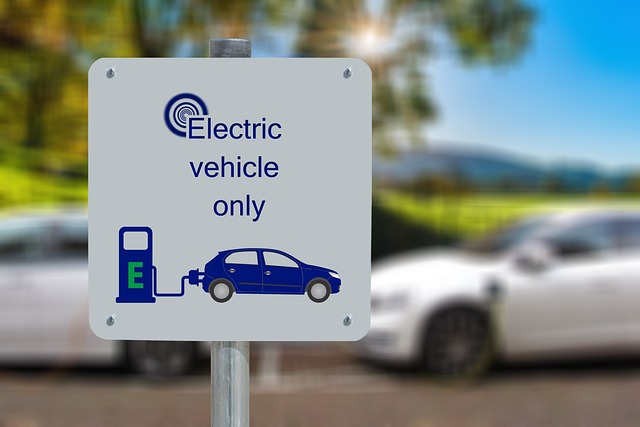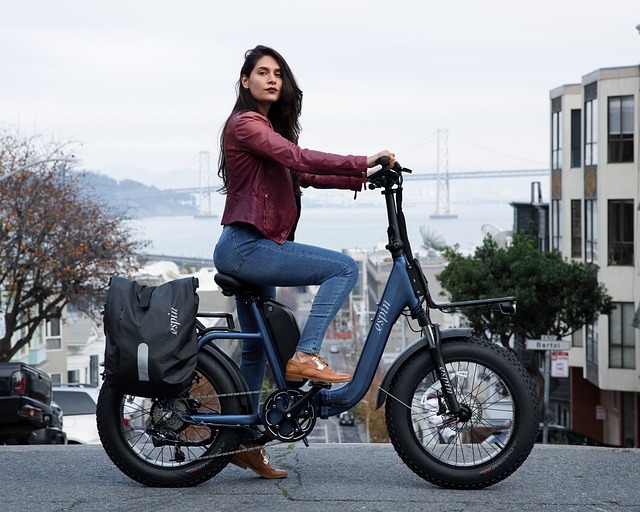The OneWheel electric board stands out as a leader in personal transportation technology, offering a unique blend of safety, reliability, and performance. Its advanced power management system ensures efficient energy use and extended range, complemented by regenerative braking to enhance eco-friendliness. The compact and durable design facilitates easy navigation through urban environments and handles diverse terrains with stability. With intelligent sensors for real-time balance and seamless integration of hardware and software, the OneWheel provides a consistent and enjoyable riding experience that is both reliable and sustainable, making it an ideal choice for daily commuters and leisure enthusiasts alike. Its commitment to innovation and user-centric design positions the OneWheel at the forefront of a new era in sustainable urban transportation.
Embark on a journey through the compact design evolution with the OneWheel electric board, a paragon of innovation in personal transportation. This article delves into the transformative technology that has redefined urban mobility. From its sleek engineering to its user-friendly interface and robust power management system, OneWheel stands at the forefront of efficiency, safety, and environmental responsibility. Join us as we explore the anatomy behind this compact marvel and cast a visionary eye towards its future in the realm of electric transit.
Unveiling the Compact Innovation: OneWheel's Electric Board Revolution

The compact design of the OneWheel electric board represents a significant leap forward in personal transportation technology. Its streamlined form factor and lightweight construction make it an ideal choice for urban commuters seeking a sustainable yet efficient mode of travel. The OneWheel’s innovation lies not only in its ability to navigate through congested city streets with ease but also in its minimalist design that prioritizes maneuverability without compromising on performance. With advanced gyroscopic and balance sensors, users can intuitively control their movements, making the learning curve surprisingly gentle for such an empowering mode of transport.
Furthermore, the OneWheel’s electric board revolution is driven by its cutting-edge technology that seamlessly integrates power efficiency with high-speed capabilities. Its lithium-ion battery ensures a long-range ride without the need for frequent recharges, catering to extended commutes or leisurely rides. The compact design also means that it’s easy to transport, whether you’re stepping onto public transit, carrying it up stairs, or storing it in tight spaces. This blend of practicality and innovation has made the OneWheel a standout choice among eco-conscious consumers looking for an alternative to traditional vehicles.
Design Philosophy: Sleekness Meets Mobility in OneWheel's Engineering

The design philosophy behind OneWheel’s engineering is a harmonious blend of sleekness and mobility, culminating in an innovative electric board that redefines urban transportation. At its core, OneWheel’s architecture is centered around user comfort and ease of use, with a focus on aesthetics that appeal to a modern sensibility. The sleek lines and minimalist approach to the external design not only make a statement but also ensure that the product is intuitive to handle, whether for short commutes or leisurely rides. This aesthetic precision extends to the device’s compact form factor, which allows for seamless maneuverability through crowded city streets or tight spaces. The integration of advanced electric propulsion technology within this streamlined frame is a testament to OneWheel’s commitment to marrying functionality with elegance, making it an indispensable tool for the urban commuter seeking a sophisticated and eco-friendly mode of transport. The OneWheel electric board stands out in the market as a symbol of how thoughtful design can lead to products that are both a joy to use and a visual delight.
The Anatomy of OneWheel's Electric Board: A Closer Look at Its Components

The OneWheel electric board represents a pinnacle of compact design and innovation in personal transportation devices. At its core, the OneWheel is an intricate assembly of high-performance components that harmoniously blend functionality with portability. The heart of the device is its electric motor, precisely engineered to deliver responsive torque and power, propelling the rider forward with a seamless fusion of electricity and kinetic energy. This motor is complemented by a rechargeable lithium-ion battery pack, strategically designed for optimal energy density and longevity, ensuring sustained performance across various terrains.
The OneWheel’s deck serves as the rider’s platform, meticulously crafted from durable materials that offer both stability and flexibility. This ergonomic design allows for intuitive body control and movement, enabling precise steering through subtle shifts in weight. The interactive user interface is integrated into the device, providing real-time feedback to the rider via a display panel that indicates speed, battery life, and ride mode selection. Below the deck, gyroscopes and sensors continuously monitor balance and direction, maintaining stability and ensuring a smooth ride. The wheels are equipped with hub motors, directly driving the wheels for efficient power transfer, while also being responsive to the rider’s input for dynamic carving movements. This symphony of components in the OneWheel electric board is a testament to the synergy between compact design and robust functionality, making it an exceptional piece of personal mobility technology.
User Experience: Navigating the Intuitive Interface of OneWheel's Controls

The OneWheel electric board stands out in the personal transportation market, not just for its innovative design and performance but also for its intuitive interface. Users engage with the device through a minimalist control scheme that prioritizes user experience. The sleek and responsive remote serves as the primary conduit between rider and machine, allowing for seamless acceleration and braking. The interface’s simplicity belies its sophistication, enabling even novice users to navigate with ease after a brief learning curve. The OneWheel’s self-balancing technology is a marvel of engineering that adapts to the rider’s weight distribution and center of gravity, providing stability and control that feels almost intuitive. This synergy between rider and board enhances the overall experience, making the OneWheel an accessible tool for commuting or carving through scenic paths. The interface’s direct feedback system ensures users are well-informed about their speed and battery life, allowing for informed decisions on the fly. This level of interaction and real-time information is crucial for safety and enjoyment, making the OneWheel electric board a cut above the rest in terms of user experience.
Performance and Efficiency: The Dynamics of OneWheel's Power Management System

The OneWheel electric board exemplifies a harmonious blend of performance and efficiency through its sophisticated power management system. This system is meticulously designed to optimize energy usage, ensuring that riders experience uninterrupted rides with consistent power output. The proprietary battery technology not only offers extended range but also rapid charging capabilities, minimizing downtime and enhancing the convenience of this personal transportation device. The power management algorithm dynamically adjusts energy consumption based on real-time data such as speed, weight, and terrain, delivering a tailored riding experience that adapts to varying conditions. This adaptive approach to power allocation contributes to the OneWheel’s reputation for both high performance and impressive efficiency, setting a benchmark in the electric board market.
Moreover, the integration of regenerative braking technology within the OneWheel further elevates its efficiency. As the rider slows down or comes to a stop, this feature captures the kinetic energy that would otherwise be dissipated as heat, converting it back into electrical energy and feeding it back into the battery. This not only extends the range but also reduces the overall power requirements during operation, showcasing the OneWheel’s commitment to sustainable and eco-friendly performance. The synergy between the power management system and regenerative braking underscores the OneWheel’s ability to deliver a seamless and sustainable riding experience that stands out in the realm of electric transportation.
Safety and Reliability: Ensuring Rider Confidence with OneWheel's Design

The OneWheel electric board stands at the forefront of personal transportation technology, offering a unique blend of safety and reliability that is critical for rider confidence. Its compact design, which distills the essence of functionality and portability, ensures that users can navigate their daily commutes with ease and agility. The board’s advanced sensors and hardware provide real-time balance and stability, allowing for a smooth ride even on less-than-ideal terrains. This responsive system works in harmony with the board’s intelligent power management to deliver consistent performance, minimizing the risk of unexpected behavior that could compromise safety.
Moreover, OneWheel’s design philosophy prioritizes durability and resilience. The board is engineered with high-quality materials that can endure the rigors of frequent use, while its streamlined form factor avoids unnecessary complexities that could lead to maintenance issues or failures. Riders can confidently trust in their OneWheel electric board as a reliable companion, knowing that it has undergone rigorous testing and adheres to stringent safety standards. This commitment to reliability and the brand’s reputation for excellence make the OneWheel an increasingly popular choice for those seeking a dependable mode of personal transportation.
Environmental Impact: OneWheel's Contribution to Sustainable Transportation

The OneWheel electric board stands as a testament to the evolution of sustainable transportation, offering an eco-friendly alternative to traditional combustion engine vehicles. Its compact design significantly reduces the environmental footprint typically associated with personal travel. Unlike cars and motorcycles that emit greenhouse gases and pollutants, the OneWheel operates on rechargeable lithium-ion batteries, drawing its power from clean electricity sources. This shift towards electrification in personal mobility not only lessens carbon emissions but also minimizes noise pollution, contributing to quieter streets and cities.
The impact of the OneWheel on sustainable transportation is multifaceted. It is not merely a product for recreational use; its efficiency and maneuverability make it a practical option for commuting short to medium distances. The lightweight and easily storable nature of the OneWheel means that urban dwellers can effortlessly integrate it into their daily lives, reducing reliance on public transportation or private vehicles during peak hours. This integration helps alleviate traffic congestion and promotes a more sustainable cityscape. Moreover, as the technology behind electric boards like the OneWheel continues to advance, their range and performance capabilities are expected to improve further, making them an even more viable option for environmentally conscious consumers looking to reduce their carbon footprint.
Future Perspectives: What's Next for OneWheel and the Evolution of Compact Electric Transit

The OneWheel electric board, a symbol of personal transport evolution, continues to carve its niche in urban and off-road landscapes. As we look to the future, the trajectory of OneWheel and similar compact electric transit systems is poised for significant advancements. Emerging technologies are set to enhance stability, safety, and user experience. Anticipated developments include improved battery technology with faster charging capabilities and extended range, which will address one of the most pressing concerns among users. Additionally, smart integration with urban infrastructure, such as dedicated lanes and seamless payment systems for shared use, is expected to increase accessibility and practicality, making the OneWheel a more viable option for daily commutes. The evolution of OneWheel also signals a broader shift towards sustainable and personalized transportation solutions, where compact electric boards can complement existing public transit systems, reducing congestion and environmental impact.
Furthermore, the future of OneWheel and its ilk is likely to be shaped by advancements in autonomous navigation and AI-driven route optimization. These innovations promise to make the experience safer and more efficient, adapting to various terrains and traffic conditions. The potential for personalized customization, where users can adjust settings to their preference or riding conditions, is another area ripe for exploration. As the technology matures, we can expect a more integrated, user-friendly, and environmentally conscious mode of transportation that the OneWheel electric board currently pioneers. The ongoing evolution of compact electric transit, with OneWheel at its forefront, suggests a future where personal mobility is seamless, enjoyable, and sustainable.
